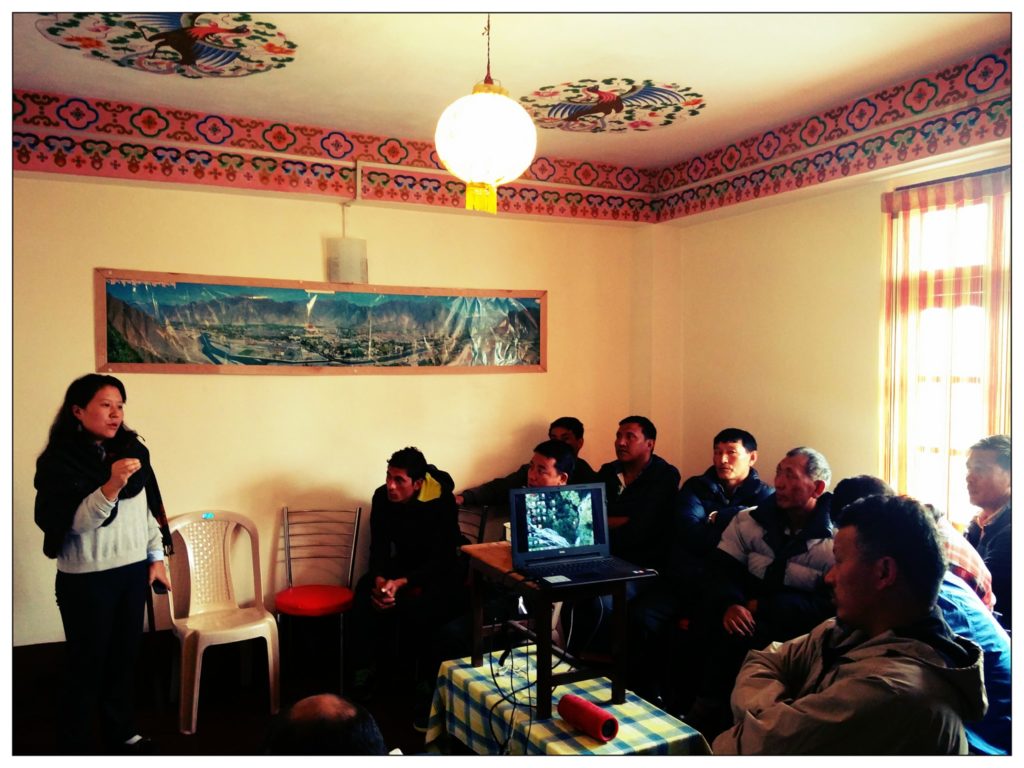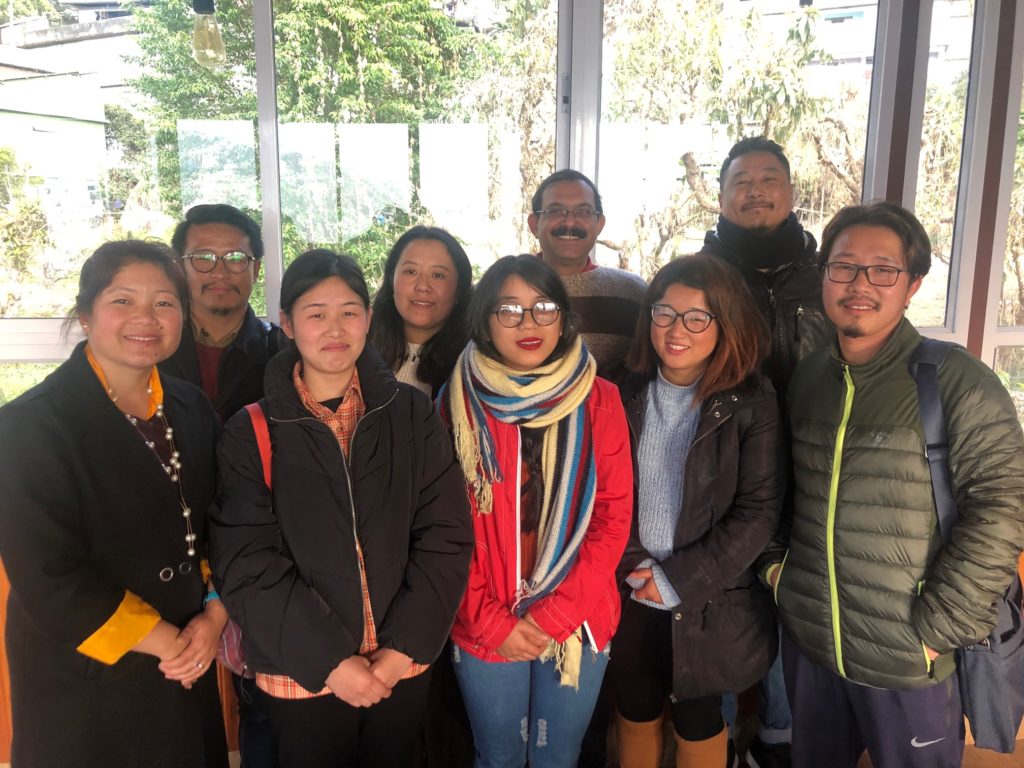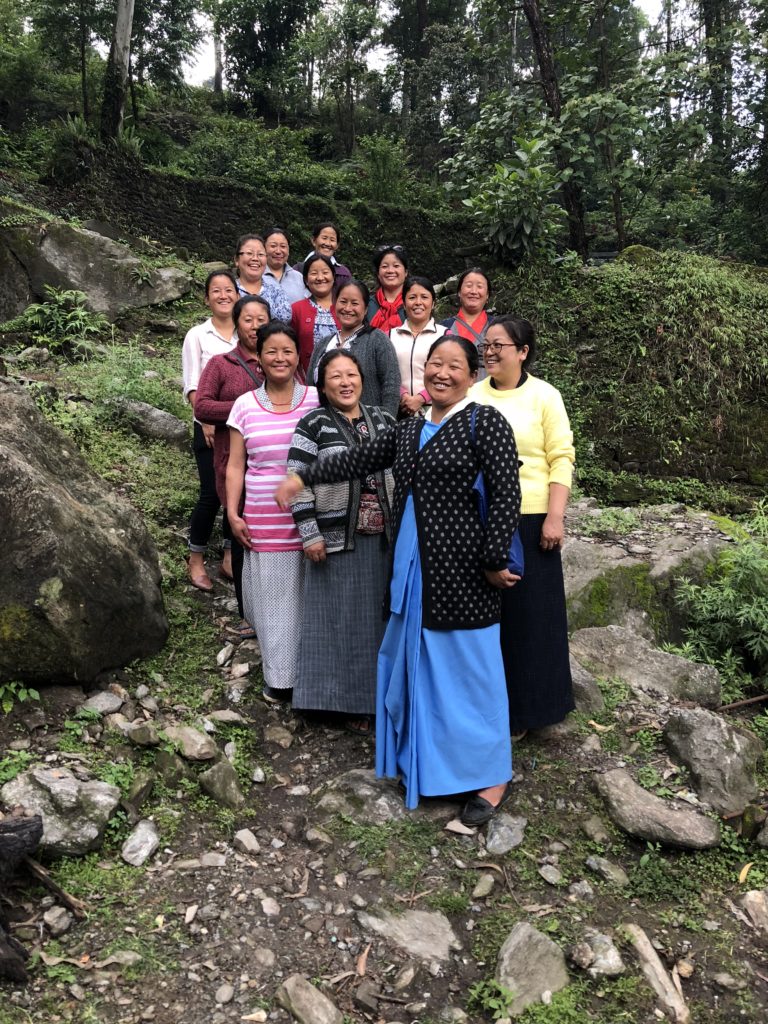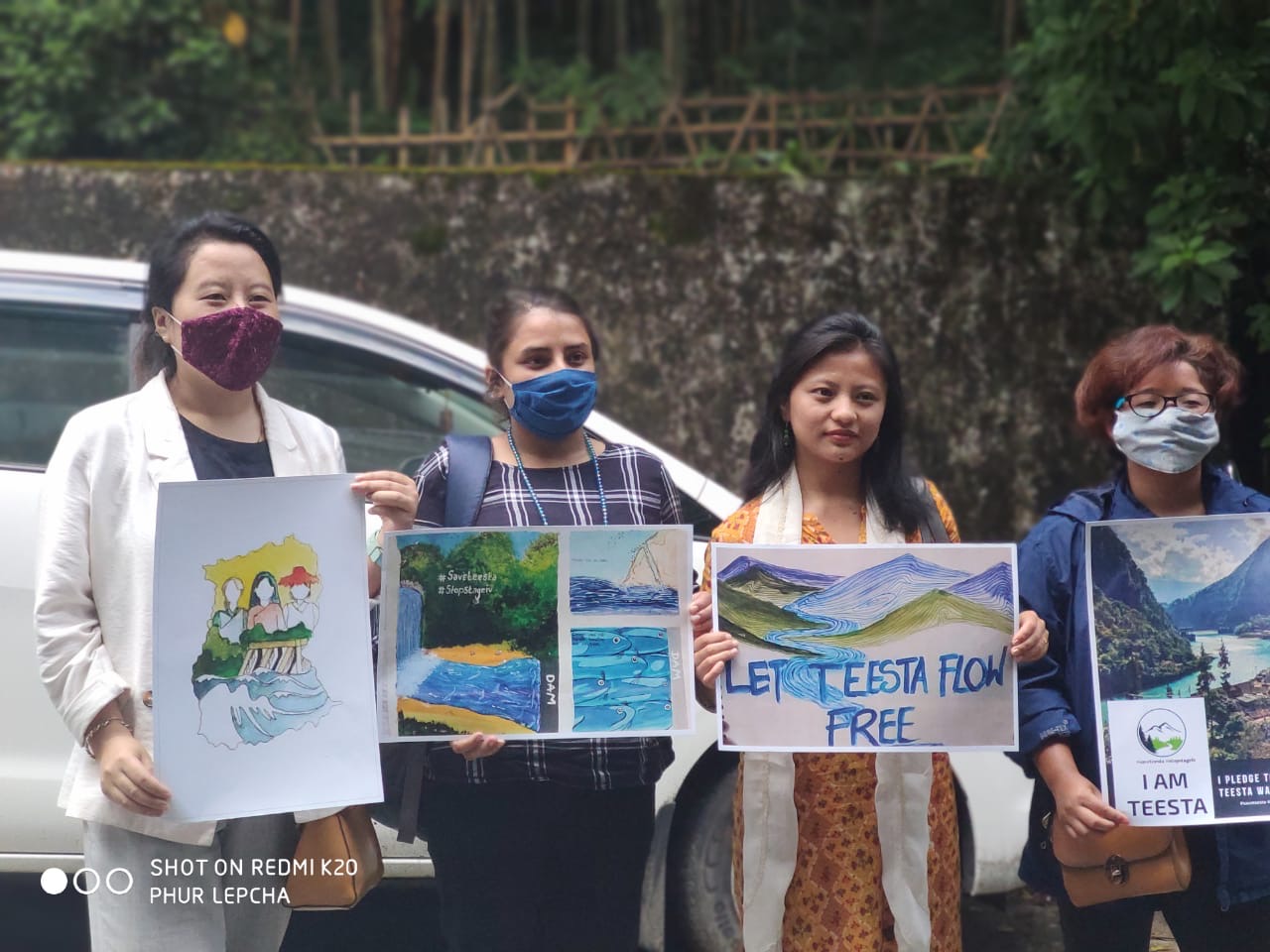A young women lawyer working with indigenous Lepcha activists to protect the last free flowing stretch of the Teesta from a destructive dam.
By: Ayesha DSouza, South Asia Program Coordinator & guest writer Melanie Scaife
The Teesta River originates in the eastern Himalayas, winding its way through the Indian states of Sikkim and West Bengal before entering Bangladesh and emptying into the Bay of Bengal. For Sikkim’s Indigenous Lepcha people, the river is sacred. For the Sikkim Government, it’s a resource to be exploited. And for lawyer Mingma L Sherpa—one of several committed women working on the Teesta River campaign—it’s something worth fighting for.
As a child, Mingma would cross the Teesta River on her way to school from her village in West Sikkim. She remembers watching the river flow, and thinking how big and beautiful it was.

Since then, the Sikkim Government has built four major hydropower dams on the Teesta and its tributaries, eager to exploit the river’s hydropower resources. Plans are now underway to build a 520-megawatt hydropower dam, known as Teesta Stage IV, on Sikkim’s last free-flowing stretch of the river. It’s a travesty for the Indigenous Lepcha community living in the northern part of the state, who risk losing their lands, livelihoods and culture should the project proceed. But Mingma—now a qualified lawyer—is doing all she can to help them protect what remains of this once pristine river.
Legal challenge to protect a sacred river
“The movement to protect the river started when I was at college,” recalls Mingma. “I used to read about it in the newspapers—the protests, the hunger strikes. The matter went to the Supreme Court, but it did not resolve in the community’s favor, so the dams were built. Since 2016, I’ve been working with the Indigenous Lepcha community and the Affected Citizens of Teesta on the campaign, which is now about stopping the Teesta Stage IV dam.”
Litigation currently before the Sikkim High Court argues a social impact assessment completed as part of the dam’s approval process failed to follow proper procedures and is therefore invalid. Even if the community is successful in arguing its case, a win potentially only buys them time. Meanwhile, Sikkim’s newly elected government is proposing starting over with a new social impact assessment.

Mingma is not deterred, and notes several other legal avenues are open to the community if a settlement with the government cannot be reached, including challenging the development from the perspectives of forest rights, biodiversity, and Indigenous rights. She also has faith in the power of the community and has watched their determination and strength grow over the years.
“Ten years ago, people weren’t aware of the consequences of having such a major dam in an environmentally fragile location. Today, people are educated and understand the implications, because locals have seen with their own eyes what has happened. The Lepcha people, they worship the river, and believe that when they die their soul passes upstream, so the river has religious significance to them. Now, because there are so many disasters like flash floods, they believe the dams have disturbed their natural environment.”
Women at the forefront
Leading the fight to save the Teesta are the local women of Dzongu, who have become a critical force behind the community’s campaign. Not only are they vocal and powerful advocates for protecting the river, they have financed the legal challenge with funds earned through their local self-help group.

“Also, when we organize anything, it is always the women who are standing so strongly and supporting the campaign,” says Mingma. “One of the major differences between the past struggle and the struggle now is the organized vocal participation of women—especially mothers and women from self-help groups. They have said this [the dam] is not good for us, for our families, for the next generation, so it’s women who have understood the situation better. In this second struggle, women are taking stronger steps, and are coming forward equally to men.”
Women’s vital role in the campaign is all the more impressive when you consider the barriers they have had to overcome to have their voices heard, including deeply held cultural and social norms about how women should behave and what roles they should occupy—something Mingma knows from personal experience.
“In Sikkim State, gender balance is better than in other parts of India. We have a platform to speak and raise our concerns, and the women here are strong and very vocal. When it comes to supporting and taking on secondary roles, this is not hard for us. But when it comes to women taking a prime leadership role and being in charge, men—and women too—can be uncomfortable with this. So, we’re at a point where we are allowed to speak, but we are not allowed to be a decision-maker. In Dzongu, if we hold a protest tomorrow, 90% of the protestors will be women, but it is still hard for them to be decision-makers, and this is definitely something we have to change in the future.”
Self-confidence is key
For now, the future looks at best uncertain for the people of Dzongu and the Lepcha people. While their campaign’s current focus is to stop the Teesta Stage IV, this project is only one of 29 hydropower developments—all at varying stages of construction—planned for the Teesta river basin in Sikkim and West Bengal. Nevertheless, Mingma remains hopeful and believes women’s ongoing participation in the campaign will be critical to its success.
“To bring more women leaders up, the important thing is to develop their self-confidence, which is difficult because of our society, and the way we have been brought up culturally. But I believe if you want to do something, what’s most important is to build up a woman’s individual confidence, because we as women have very strong emotions, everything is very strong, so once we have confidence in ourselves, then I believe nothing can stop us.”
International Rivers’ South Asia program is part of the regional Transboundary Rivers of South Asia program. Supported by the Government of Sweden, TROSA is a collaboration with Oxfam, IUCN, ICIMOD and many local organizations that works on some of the more complex rivers in South and Southeast Asia: the Ganga, Brahmaputra and Meghna river systems, including their tributaries such as the Teesta, and Asia’s last last free flowing river, the Salween. TROSA works to promote improved cross-border governance of these transboundary rivers, support women’s leadership, and advance energy alternatives to large hydropower.
Featured image: Young women activists and Mingma Lhamu in Gangtok campaign for free flowing rivers by stopping the Teesta Stage IV dam | Photo by: Phur Tshering Lepcha

